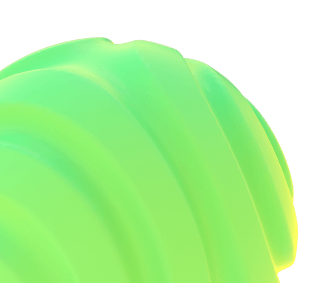The Complete Guide to Knak's Figma Integration: From Design to Deployment

Summary
Knak’s Figma integration bridges design and deployment. Create, sync, and scale emails without manual coding or lost details.
The designer just shared another Figma link. You both know what happens next: extracting assets, rebuilding layouts in code, clarifying spacing decisions over Slack, and somehow losing the magic between that perfect mockup and what actually ships. Even with streamlined workflows and better handoff tools, this gap between design and deployment persists.
The Knak Figma integration addresses this friction directly. Your designs move from Figma into Knak, then seamlessly into your marketing automation platform. No more manual rebuilds. No more interpretation errors. Just your design, production-ready, working exactly as intended.
How the Knak Figma Integration Works
Think of the integration as a translator. It takes your Figma designs and brings them directly into Knak, where they become fully functional emails ready for your marketing automation platform. This translation happens intelligently, preserving your design intent while ensuring technical compatibility.
The integration handles several technical transformations automatically:
- HTML structure – Figma's flexible layouts convert into table-based HTML that renders consistently
- Typography – Your font choices translate into email-safe stacks that work across clients
- Color systems – RGB values convert to hex codes with proper contrast ratios
- Spacing – Padding and margins translate precisely from design to code
- Image handling – Graphics optimize automatically for email delivery
Once in Knak, the platform takes over the heavy lifting:
- Responsive behavior – Single designs adapt to any screen size without separate mobile versions
- Dark mode support – Automatic adjustments ensure readability in both display modes
- Fallback systems – Font stacks, color alternatives, and image fallbacks protect against client limitations
- Cross-client compatibility – Code adjustments for Outlook, Gmail, Apple Mail quirks
- Accessibility standards – Proper contrast, alt text, and semantic structure
This separation makes sense. Figma excels at visual design. Knak specializes in email production requirements. The integration lets each tool do what it does best.
For enterprise teams, this workflow creates powerful possibilities. Central design teams build Figma component libraries that sync to become approved Knak modules. Regional teams access these pre-built components knowing they'll work correctly. Marketing ops adds personalization after design lock without touching visual elements.
The Dynamic Content Solution
Static mockups in Figma can't show how emails adapt for different segments. A product recommendation email might display running shoes for marathoners and hiking boots for outdoor enthusiasts, but Figma only shows one version. This limitation creates a disconnect between design vision and campaign reality.
The integration bridges this gap by separating visual design from content logic. Designers create beautiful layouts in Figma using placeholder content. After syncing to Knak, marketing teams layer in the rules that determine what each subscriber sees.
Picture an online retailer preparing personalized product recommendations. The designer crafts an elegant card layout in Figma, perfects the typography, and nails the spacing using sample products. Once synced to Knak, the marketing team implements conditional logic: customers who bought camping gear see tents and sleeping bags, while fitness enthusiasts see workout equipment and supplements. The design remains pristine while content personalizes for each recipient.
This approach benefits everyone involved. Designers focus on creating compelling visuals without learning merge tag syntax. Marketers implement sophisticated personalization without writing CSS. The stable mockup from Figma becomes battle-tested against various segmentation scenarios in Knak, ensuring perfect emails sync to your marketing automation platform regardless of how content varies.
Managing Variants at Scale
A single email for twelve markets with four display modes means 48 separate files in traditional workflows. Each variant becomes its own project with separate design, development, and QA cycles. Small inconsistencies creep in. Updates become nightmares. The process breaks down as complexity multiplies.
The integration eliminates this multiplication problem. Design once in Figma. The responsive code automatically adapts to different screens. Dark mode rendering happens based on your color choices. Regional variations get handled through Knak's dynamic content rather than separate files.
A global software company transformed their quarterly updates using this approach. They previously managed 48 files for each campaign, with designers creating variations for days and developers implementing them for weeks. Now they create one master design in Figma, sync it to Knak, and use dynamic content blocks for regional differences. Three weeks of work compressed into three days.
Email Campaign Use Cases for the Knak-Figma Integration
Event Email Series
Event campaigns demand visual consistency across multiple touchpoints. Your designer creates the complete journey in Figma: save-the-date announcements, registration confirmations, reminder sequences, and post-event surveys. Everything shares the same visual language because it's designed together.
After syncing to Knak, you add functional elements that make events work. Calendar files attach to invitations. Registration links connect to your event platform. Countdown timers create urgency. The design stays perfect while functionality scales to handle complex event logistics.
Product Launch Templates
Product launches require both flexibility and speed. Build a modular component system in Figma with different launch elements: dramatic hero sections for major announcements, feature grids for technical details, testimonial blocks for social proof, comparison tables for competitive positioning.
These modules sync to Knak as reusable components. Hardware launches might combine bold imagery with detailed specifications. Software releases might emphasize integration capabilities and workflow benefits. The same component library serves both needs, with marketing teams mixing modules based on launch requirements.
Newsletter Transformation
Modernizing newsletters means evolving without alienating subscribers. Start by redesigning one section in Figma, perhaps the header or featured article block. Sync this refreshed component to Knak and test it against your current design.
Measure engagement changes, then expand the transformation section by section. Subscribers experience gradual improvement rather than jarring change. You maintain what works while systematically upgrading what doesn't.
Seasonal Campaign Library
Build your entire holiday campaign suite in Figma during summer. Black Friday emails, Cyber Monday promotions, gift guides, and year-end sales all get designed when you have time to think strategically.
These campaigns sync to Knak months before deployment. Placeholder content updates based on current inventory. Segment-specific variations trigger based on customer behavior. When the busy season arrives, campaigns deploy rather than being desperately assembled.
A/B Testing Acceleration
Testing different approaches no longer requires production overhead. Duplicate your Figma design and modify the variant. Change the hero image, adjust the CTA placement, try a different color scheme.
Each variant syncs individually from Figma to Knak, but the process still takes minutes rather than days. This speed enables aggressive testing strategies based on actual performance data rather than opinions.
Localization Workflows
Global campaigns need thoughtful adaptation beyond translation. Create your master design in Figma with clear content zones and buffer space for text expansion. German text runs 30% longer than English. Your design must accommodate this gracefully.
After syncing to Knak, regional teams update content, imagery, and calls-to-action for their markets. Currency symbols adapt. Date formats localize. Cultural imagery updates. The core design structure remains consistent while details reflect local preferences.
Starting with Strategic Intent
Success comes from strategic implementation rather than wholesale adoption. Choose a pilot project that's meaningful but contained. Document where friction currently occurs. Which handoffs cause delays? What errors repeat despite best efforts?
Build your component library based on actual usage patterns. Start with essentials: headers, content blocks, CTAs, footers. Expand based on what teams actually need rather than theoretical requirements.
Phase training thoughtfully. Designers need to understand email constraints and proper Figma setup. Marketing ops teams must master the sync process and dynamic elements. Regional teams require guidance on component usage and brand standards.
The Practical Path Forward
The Knak Figma integration streamlines a workflow that shouldn't be manual in 2025. Designers keep working in Figma. Marketing ops continues using Knak. Campaigns still deploy through your marketing automation platform. What changes is the friction between these systems.
Resource-constrained teams face increasing pressure to produce more sophisticated campaigns with flat budgets and limited headcount. The integration addresses this reality by eliminating repetitive work rather than adding new processes.
Start with one use case from this guide. Run a focused test. Measure the results. Expand based on what you learn. This pragmatic approach ensures you're solving real problems rather than implementing technology for its own sake.
The challenges from our earlier discussion about Figma email design now have direct solutions. Manual rebuilds disappear through automatic translation. Email code follows technical requirements without human intervention. Every design works everywhere from the start.
The integration is available now for Knak customers. Pick your first campaign to transform. The path from Figma design to deployed email has never been more direct.












